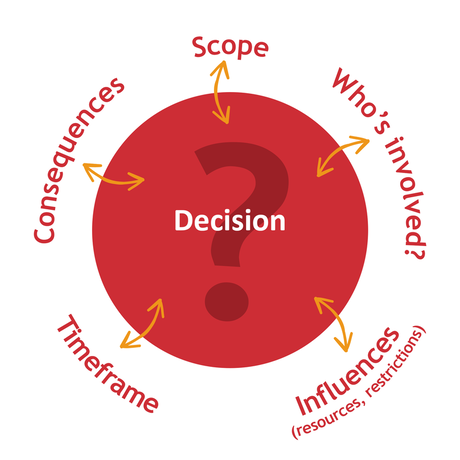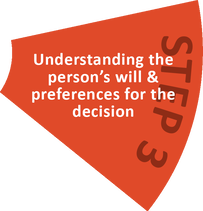This talk video is an introduction to Step 2.
Identifying the Person's Decision
Identifying and describing decision helps to focus attention on the core issues, guide who to involve in the process, identify tensions, and clarify the potential flow on effects of this decision to other parts of a person’s life.
Sometimes supporters make decisions for the person without realising it.
They may think they know what the person wants, and what may or may not be possible. Supporters may assume a decision is not important or seems minor, yet it may be significant to the person’s quality of life. Importantly, the size of the decision does not necessarily equate to its significance. When supporters make assumptions about the scope and nature of the decision they can inadvertently narrow the options to be considered.
Identifying the decision also helps supporters to become aware of other earlier decisions that have been made by others or simply taken for granted.
For example, if Anne likes to eat muesli for breakfast, her supporters might take for granted the decision about what she wants for breakfast, rather than offering alternatives and asking her everyday to make a decision about what she would like. Or perhaps whether she would like breakfast at all. Would she prefer to wait for brunch?
Describing the Features of a Decision
Describing the decision allows you to see its features in full. It also assists you to remove any assumptions about what the person wants, and what may or may not be possible.
The features of the decision are summarised in Figure 4. Each feature is described as follows:
- Scope: the type of impact the decision is likely to have on the person’s life and other decisions that might flow on from it. For example, a decision about whether or not to continue to attend a social club might only affect one evening every fortnight, but a decision about whether or not to exercise every day will have a much greater impact on fitness and, in turn, other things a person might be able to do in their life.
|
Describing a decision helps to focus attention on the core issues, guide who to involve in the process, identify tensions or influences that might be amenable to change and clarify the potential flow on effects of this decision to other parts of a person’s life.
This video shows an example of identifying and describing the decision.
Watch the video and then complete the table.
Complete the table provided in the workbook to describe the features of Sarah’s decision.
You write in the downloadable workbook located in the Resources section.
You write in the downloadable workbook located in the Resources section.
This video shows an example of identifying and describing the decision.
Watch the video and then answer the questions. Write in the downloadable workbook located in the Resources section.
- Complete the table provided in the workbook to describe the features of Josh's decision.
- What does Josh's support worker know about him that is important to supporting his decision? Explain.
Select the button below to learn about Step 3 Understanding the person's will & preferences for the decision.






